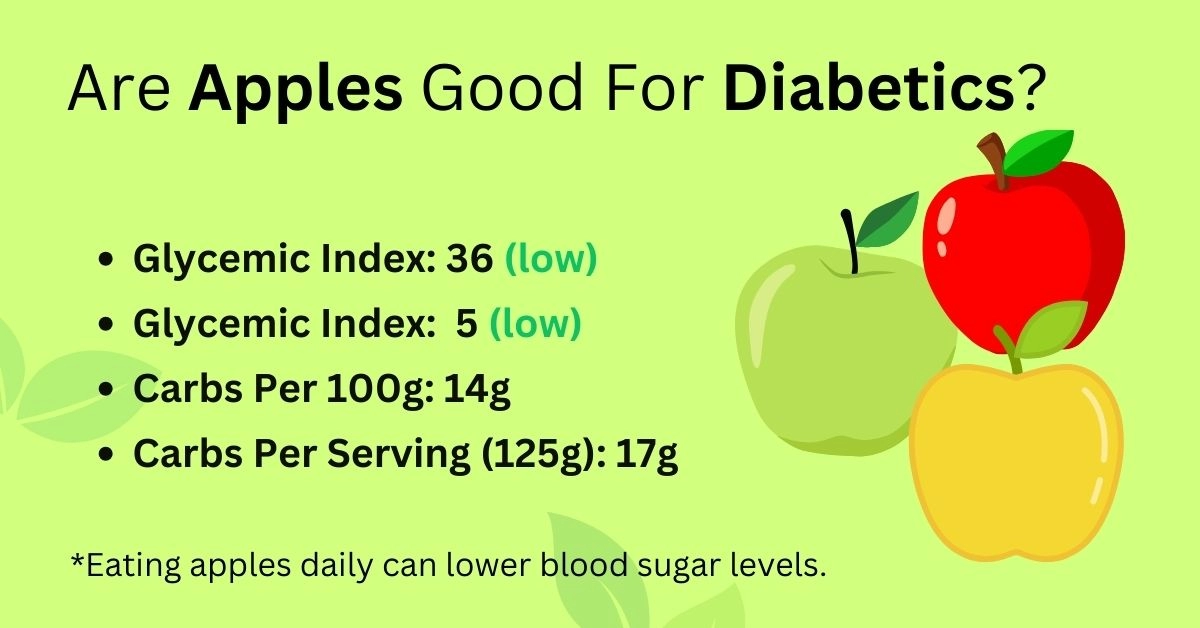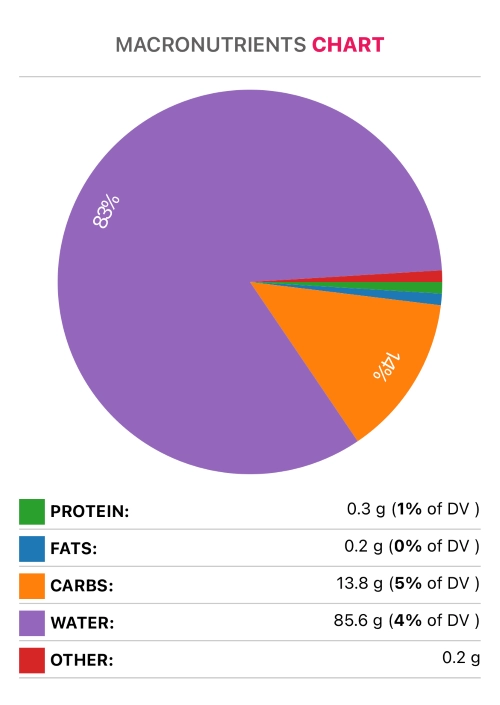Apples and Diabetes - Are They Good For Diabetics

Introduction
Apples are delicious and healthy fruits, but as we know, these fruits have carbs and sugars, affecting blood glucose and insulin levels. Still, the carbs found in apples do not affect your body like processed sugars.
We'll discuss how apples affect blood sugar levels and how to include them in your diet if you have diabetes.
Glycemic Index and Carbohydrates
According to the International Tables of Glycemic Index, an apple's glycemic index differs depending on the country it was grown in. However, an apple's glycemic index is calculated at 36, which is considered a low GI.
The carbs content of apples is not high; however, they contain 13.81g per 100g, of which 2.4g is fiber and 11.41g are net carbs. The central part of the sugar found in apples is fructose. Fructose has minimal effect on blood sugar levels when consumed whole fruit.
In addition, apples are high in antioxidants and vitamin C, which can benefit blood glucose levels.
Apples also contain a good amount of fiber, which can benefit people with diabetes since fiber is essential for controlling blood sugar (1).
Apples will not raise your blood glucose levels if you consume them in moderation.
To find glycemic index values of 350+ pages, you can visit the Glycemic index chart page.

Type-2 Diabetes
Overall, apples are suitable fruit for people with diabetes because they have a relatively low impact on insulin and blood sugar levels.
Studies show that eating apples daily can reduce insulin resistance, lowering blood sugar levels.
This is due to the polyphenols found in the apple skin, which benefit the body's ability to utilize insulin effectively (2).
One review found that replacing glucose or sucrose with fructose led to less sugar and insulin in the bloodstream after meals (3).
Another in vivo study showed that apples could increase insulin sensitivity by increasing glucose infusion rate (GIR) by 45 %. Additionally, in vitro results showed that apple polyphenols could represent a novel nutritional approach to managing and controlling blood glucose and insulin (4).
Besides, apples are high in antioxidants, such as quercetin, chlorogenic acid, and phlorizin, which can prevent some harmful chemical reactions in your body. They have many health benefits, including protecting your body from chronic disease. According to one study, these antioxidants may help slow the digestion of carbs, thereby preventing blood sugar spikes. They may help your body use sugar more efficiently, though some studies have yielded inconclusive results (5.6).
Another study found that eating apples reduced the risk of cardiovascular disease and type 2 diabetes.
Another study found that eating an apple before a high glycemic index food, such as rice, significantly reduces the glycemic response of the meal without affecting satiety levels. This effect gives apples the metabolic potential to reduce glycemic excursions and the risk of type 2 diabetes and its associated complications (7).
Apple consumption has been linked to an 18% reduction in the risk of type 2 diabetes.
Consuming one serving of apples or pears per week is associated with a 3% reduction in diabetes risk (8).
Three cohort studies published in 2013 found that eating more whole fruits, specifically blueberries, grapes, and apples, was associated with a lower risk of type 2 diabetes (9).
In summary, apples might help prevent diabetes due to their potent antioxidants.
Gestational Diabetes
Gestational diabetes is a type of diabetes that occurs in pregnant women who have never had diabetes before. Gestational diabetes mellitus has long been linked to obstetric and neonatal problems, particularly increased child birthweight, and is now becoming recognized as a risk factor for future cardiometabolic disease in both the mother and her kids. It can lead to a variety of complications if left untreated. It is possible to lower the risk of gestational diabetes by eating a healthy diet and staying at a healthy weight (10).
Research suggests that eating 2 to 4 servings of fruits like bananas, apples, and oranges daily may help you stay on a healthy diet during pregnancy (11).
References
- https://www.ncbi.nlm.nih.gov/pmc/articles/PMC6448314/
- https://www.ncbi.nlm.nih.gov/pmc/articles/PMC2871121/
- https://pubmed.ncbi.nlm.nih.gov/28592611/
- https://www.ncbi.nlm.nih.gov/pmc/articles/PMC4852413/
- https://pubmed.ncbi.nlm.nih.gov/23416115/
- https://pubmed.ncbi.nlm.nih.gov/24917557/
- https://www.ncbi.nlm.nih.gov/pmc/articles/PMC6950014/
- https://www.researchgate.net/publication/312644914
- https://www.ncbi.nlm.nih.gov/pmc/articles/PMC3978819/
- https://academic.oup.com/edrv/article/43/5/763/6511028?login=false
- https://www.ncbi.nlm.nih.gov/pmc/articles/PMC6024719/
